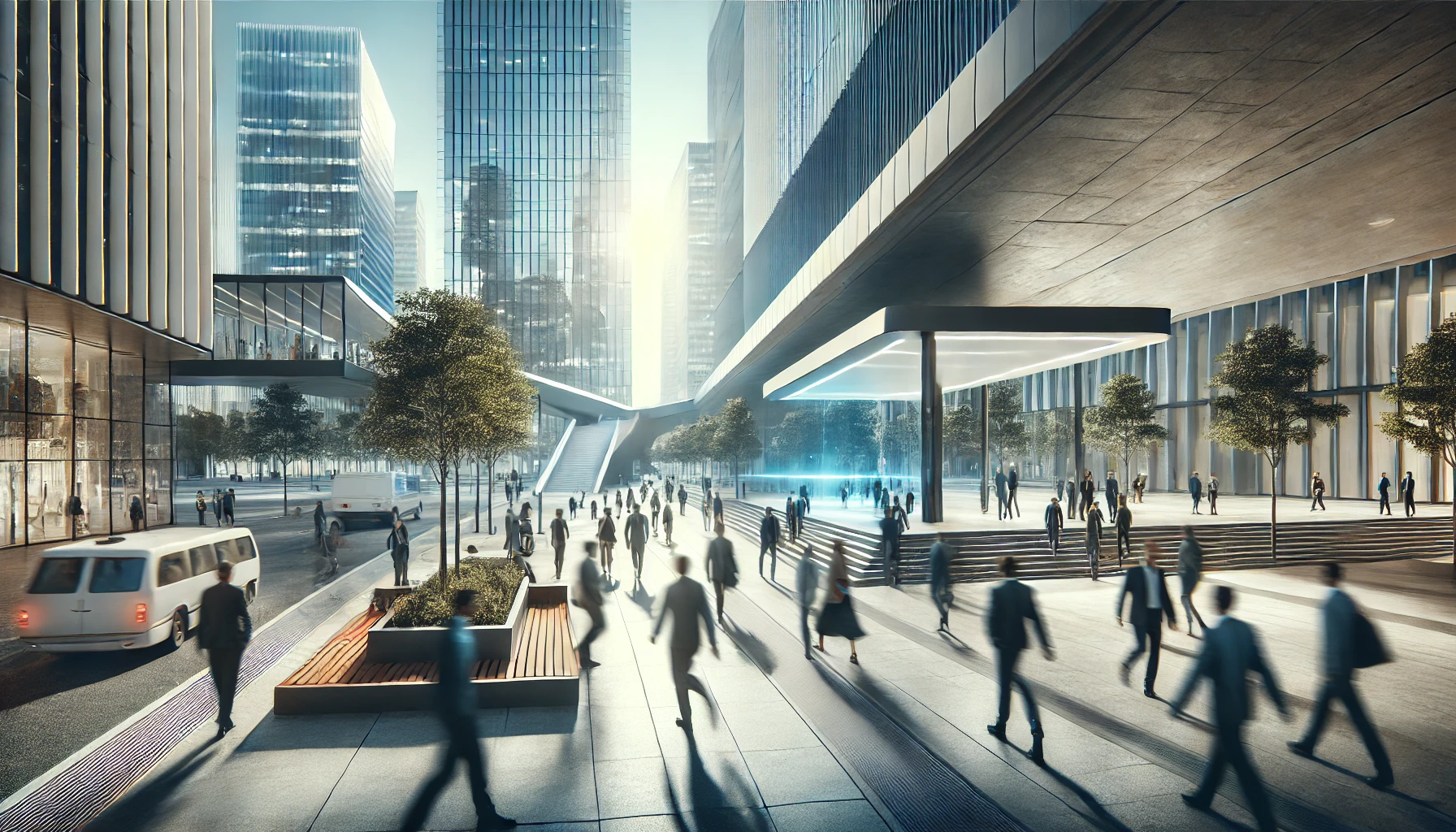AI Reveals How Urban Public Spaces Have Shifted from Social Hubs to Transit Corridors
A study by top global research institutes using AI analyzed 30 years of video footage to reveal faster walking speeds, less lingering, and fewer social interactions in urban spaces, signaling a shift toward efficiency over community in city environments. The findings emphasize the need for urban design to balance mobility with fostering human connections.

A pioneering study by researchers from the National Bureau of Economic Research, MIT’s Senseable City Lab, Harvard University, the University of Hong Kong, and other global institutions has used artificial intelligence to track how public spaces in urban areas have transformed over the past 30 years. By analyzing archival footage from the 1980s and contemporary videos from 2008-2010, the research delves into changes in pedestrian behavior and social dynamics in four key sites in New York, Boston, and Philadelphia. This study builds on the seminal work of urbanist William Whyte, whose observational techniques are now enhanced by advanced computer vision and deep learning, offering a clearer, more scalable lens on how people use city spaces.
Faster Streets, Fewer Interactions
The study found a notable increase in walking speeds, with pedestrians moving 15% faster in 2010 than in 1980. At the same time, lingering behaviors where individuals spend time stationary in public spaces dropped by nearly half. While 43% of people lingered in public spaces in 1980, only 26% did so three decades later. These trends were consistent across all studied sites, with dramatic drops seen in Boston’s Downtown Crossing, where the share of lingerers plummeted from 54% to just 14%. In contrast, areas like New York’s Bryant Park managed to maintain some social vibrancy due to focused urban revitalization efforts.
The variance in walking speeds also increased, reflecting a broader range of movement patterns. While some pedestrians moved swiftly, others still adopted slower paces, though in increasingly fewer numbers. The findings suggest a shift toward treating public spaces as thoroughfares rather than places for leisure or connection, a trend driven by changing urban priorities.
Public Spaces Lose Their Social Core
Social interactions in public spaces also experienced a significant decline. The percentage of individuals walking alone remained steady, at 67% in 1980 and 68% in 2010, while the prevalence of group encounters dropped sharply. In 1980, 5.5% of pedestrians formed groups within the public spaces, either through chance meetings or pre-arranged plans. By 2010, this figure had fallen to just 2%.
Although some areas experienced localized trends like an increase in dyads (groups of two) in Bryant Park due to improved safety and design these were exceptions. Most spaces, including Philadelphia’s Chestnut Street, saw consistent declines in social interactions, underscoring their growing function as transit corridors rather than communal hubs. The study highlights a troubling reduction in the role of public spaces as catalysts for spontaneous encounters and community-building.
Economics and Design Shape Behavior
The researchers attribute these changes to a mix of economic and cultural factors. Rising urban incomes have made time a more valuable commodity, driving a preference for efficiency and reducing the propensity to linger. Meanwhile, gentrification and urban revitalization efforts have reshaped the character of many public spaces. For instance, Bryant Park has become a destination known for safety and aesthetics, increasing its appeal for group activities. On the other hand, areas like Downtown Crossing, serving primarily utilitarian purposes, saw significant declines in social use.
Interestingly, locations with unique attractions such as the steps of the Metropolitan Museum of Art were able to resist some of these trends. Despite being situated in a high-income area, this space retained higher levels of lingering behavior, suggesting that compelling amenities can counterbalance the growing emphasis on speed and efficiency in urban environments.
Technology Unlocks New Insights
The research leveraged cutting-edge AI tools to analyze behavioral patterns, combining archival footage from the Project for Public Spaces with contemporary recordings. Using models like YOLO for object detection and Deep-SORT for tracking, the team identified and monitored pedestrian behaviors with unprecedented accuracy. Fine-tuning these AI systems for older, lower-resolution footage ensured robust comparisons between decades.
This methodology addressed the limitations of manual observation, such as labor intensity and subjective bias, while opening new doors for urban studies. The team’s ability to quantify behaviors like walking speeds, group formations, and lingering times marked a significant leap forward, offering scalable insights into how people use urban spaces. These tools not only enhanced the reliability of the findings but also set the stage for future studies to explore larger datasets and more nuanced social dynamics.
Balancing Mobility and Community
The findings hold significant implications for urban planning and design. As public spaces increasingly prioritize mobility over social engagement, the risk of eroding their community-building potential looms large. Urban planners face the challenge of creating spaces that balance the need for efficiency with the equally critical role of fostering human connection. Lessons can be drawn from spaces like the Metropolitan Museum’s steps, which demonstrate how unique, engaging amenities can encourage lingering and social interactions despite broader trends toward speed and isolation.
The study also opens avenues for future research. Expanding the dataset to include more diverse locations and incorporating additional technologies, such as GPS or Bluetooth, could capture more nuanced patterns of interaction. Furthermore, analyzing the quality of social encounters and distinguishing between spontaneous and pre-arranged meetings or interactions among strangers versus acquaintances could deepen our understanding of the forces shaping urban life.
This innovative research, blending historical context with AI-driven analysis, provides a compelling narrative about the changing social fabric of cities. It challenges urban planners and policymakers to rethink how public spaces can be designed to serve both functional and social purposes, ensuring that cities remain vibrant and connected in an era of rapid cultural and technological change.
- READ MORE ON:
- artificial intelligence
- urban revitalization
- AI tools
- YOLO
- Deep-SORT
- FIRST PUBLISHED IN:
- Devdiscourse










